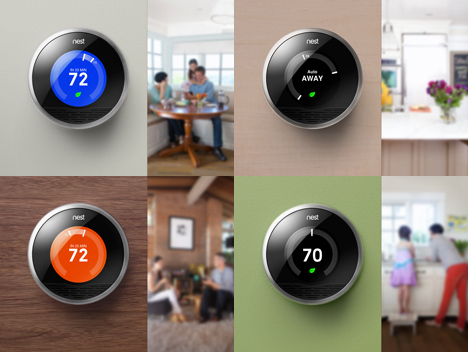 San Francisco – Tony Fadell, the designer known as the godfather of Apple Inc’s (AAPL.O) iPod, is enlisting several of the country’s largest power utilities to get his power-saving creation, the “Nest” thermostat, into more U.S. households.
San Francisco – Tony Fadell, the designer known as the godfather of Apple Inc’s (AAPL.O) iPod, is enlisting several of the country’s largest power utilities to get his power-saving creation, the “Nest” thermostat, into more U.S. households.
Subscribe to our Daily Roundup Email
Nest Labs, the company he co-founded in 2010 with designers and engineers from Silicon Valley firms like Apple and Google Inc (GOOG.O), is teaming up with six utilities to provide incentives for using its thermostats. They include $100 rebates, rewards for adopting energy-saving programs, even a free device in some cases.
The U.S. utilities that have already rolled out programs, or will begin to do so in coming weeks, include NRG Energy (NRG.N), its subsidiaries Reliant and Green Mountain Energy, National Grid, Austin Energy and Southern California Edison (SCE_pe.A).
To fund those initiatives, Fadell is tapping into a pool of money — to the tune of about $9 billion — that these and other power utilities collectively set aside to promote energy efficiency programs, particularly to avoid brownouts.
Brownouts — where sudden spikes in electricity usage disrupt the grid’s power supply — are a problem in many markets and some of the projects envisioned to avoid it include rebates for power-efficient appliances, financial incentives to curtail electricity use during peak hours, and energy awareness programs.
“It’s a lot of money but we don’t think it is being effectively used,” Fadell said in an interview. “We went after exactly that money and wanted to redistribute it, so to speak, to our customers.”
The Nest thermostat — a round, brushed-metal device with a convex glass screen that displays temperature and changes hue to match the color of the wall it attaches to — tracks usage behavior and uses that data to automatically set heating and cooling temperatures.
The energy-saving features of the device, one of which is the thermostat turns down heating or cooling when no one is present, were what prompted the utilities to underwrite the incentive programs, Fadell said.
Managing the power load of the home is a big opportunity for avoiding spikes in use during peak hours, David Crane, president and CEO of NRG Energy, said in a statement.
Nest’s deals with the utilities might help build a better picture of demand for the startup’s devices, which at around $250 are on the pricey side. Fadell declined to provide sales details or estimate how much of a boost in demand it hopes to get from its deals with the utilities.
The company is “blowing through all of our forecasts,” Fadell said without elaborating.
MYRIAD DEALS
Nest’s deals with utilities run the gamut. Customers of SoCalEdison and Austin Energy who also own Nest thermostats can sign up for a program called “Rush Hour Rewards”, which provides money or credits for using less power during peak load times.
Texan utility Reliant, on the other hand, kicked off a pilot plan, bundling a free Nest thermostat with some of its energy-saving plans.
“The response has been off the charts,” Fadell said. “The conversion rate has been enormous. We were all staggered by the reaction.”
And National Grid in Rhode Island and Massachusetts will be providing a $100 online rebate to customers who buy the thermostat, bringing the price down to about $150.
People earned $20 to $60 per season by signing up for the ‘Rush Hour’ program alone, Fadell said.
Nest — which attracted funding from venture capital firms including Kleiner Perkins, Lightspeed Venture Partners, and Shasta Ventures — now has 210 employees, up from 90 in 2011. Its device is displayed today at over 3,000 locations, including major home appliance retailers and Apple’s retail store.

Before you run out to buy one of these, realize you have to shut the motion feature off for Shabbos. Once you do that you probably will never turn it back on and this becomes a $250 wall ornament.
Why should it be difficult to have the days of Shabbos and Yom Tov programmed into the device so that it automatically switches to a manual mode just for those days? Thus the device could remain useful for all other days.